Do you have a question about the Toro Power Clear R/621 E and is the answer not in the manual?
Symbol indicating potential injury hazards; follow precautions to avoid serious injury or death.
Diagram showing where to find the machine's model and serial numbers for reference.
Read and understand manual instructions, controls, and stopping procedures before operation.
Inspect operating area, wear appropriate clothing, and handle fuel with care.
Avoid hazards, stay alert, check for damage after impact, and address abnormal vibration.
Keep body parts away from moving rotor blades to prevent severe injury.
Stop engine, remove key, and wait for parts to stop before any service.
Shut off engine, wait for blades to stop, use a clean-out tool, not hands.
Check fasteners, store fuel safely, and maintain labels as needed.
Explains the meaning and importance of various safety and instructional decals on the machine.
Chart to verify all required loose parts have been shipped with the snowthrower.
Steps to unfold the handle, adjust locks, and tighten knobs securely.
Procedure to install the discharge chute and handle using bolts, washers, and locknuts.
Instructions for filling the engine with the correct oil type and level before operation.
Indicates that control cable adjustment details are found in the Maintenance section.
Diagram identifying key components of the Power Clear snowthrower.
Critical warnings on handling flammable gasoline to prevent fire or explosion.
Guidance on using clean, unleaded gasoline and safe fueling practices.
Steps for checking engine oil level on a level surface before each use.
Turning ignition key, pulling choke lever, and preparing for engine start.
How to use the primer and electric/recoil starter for engine ignition.
Warnings on electric starter use, duration, and potential damage.
Procedure to engage rotor blades by holding the control bar against the handle.
Procedure to disengage rotor blades by releasing the control bar.
How to stop the engine by turning the ignition key counterclockwise to Off.
How to adjust the direction of snow discharge using chute controls.
Reiteration of safe procedure to clear a clogged chute using a tool, not hands.
Steps to run engine, clear snow/ice, and move controls to prevent freezing.
Keep area clear of objects, keep children/pets away, remove snow promptly.
Table detailing maintenance tasks and intervals (hours, daily, yearly).
How to check for and ensure proper slack in the control cable for safe operation.
Steps to adjust control cable slack using adjuster links and Z-fittings.
Detailed steps for draining old oil, and refilling with new oil.
How to inspect rotor blades for wear using a wear indicator hole.
Procedure for checking, gapping, and replacing the spark plug.
Specific instructions on setting the correct gap for the spark plug.
Final steps for installing the spark plug and connecting the wire.
Steps to remove the drive belt cover and replace the drive belt.
Guidance on correctly routing the new drive belt around the pulleys.
Detailed instructions on preparing the machine for long-term storage, including fuel and engine.
Details the manufacturer's warranty for emission-related parts.
Outlines owner's duties for maintenance and warranty claims.
Specifies the warranty duration and conditions for emission systems.
Lists specific parts covered under the emission control warranty.
Warranty covering the engine's ability to start on the first or second pull.
General warranty for defects in materials or workmanship.
Specifies the warranty terms for commercial, institutional, or rental use.
Steps for initiating and receiving warranty service.
Emphasizes owner's responsibility for performing routine maintenance.
Lists items and conditions not covered by the warranty.
Defines conditions for repairs and limits liability.
Symbol indicating potential injury hazards; follow precautions to avoid serious injury or death.
Diagram showing where to find the machine's model and serial numbers for reference.
Read and understand manual instructions, controls, and stopping procedures before operation.
Inspect operating area, wear appropriate clothing, and handle fuel with care.
Avoid hazards, stay alert, check for damage after impact, and address abnormal vibration.
Keep body parts away from moving rotor blades to prevent severe injury.
Stop engine, remove key, and wait for parts to stop before any service.
Shut off engine, wait for blades to stop, use a clean-out tool, not hands.
Check fasteners, store fuel safely, and maintain labels as needed.
Explains the meaning and importance of various safety and instructional decals on the machine.
Chart to verify all required loose parts have been shipped with the snowthrower.
Steps to unfold the handle, adjust locks, and tighten knobs securely.
Procedure to install the discharge chute and handle using bolts, washers, and locknuts.
Instructions for filling the engine with the correct oil type and level before operation.
Indicates that control cable adjustment details are found in the Maintenance section.
Diagram identifying key components of the Power Clear snowthrower.
Critical warnings on handling flammable gasoline to prevent fire or explosion.
Guidance on using clean, unleaded gasoline and safe fueling practices.
Steps for checking engine oil level on a level surface before each use.
Turning ignition key, pulling choke lever, and preparing for engine start.
How to use the primer and electric/recoil starter for engine ignition.
Warnings on electric starter use, duration, and potential damage.
Procedure to engage rotor blades by holding the control bar against the handle.
Procedure to disengage rotor blades by releasing the control bar.
How to stop the engine by turning the ignition key counterclockwise to Off.
How to adjust the direction of snow discharge using chute controls.
Reiteration of safe procedure to clear a clogged chute using a tool, not hands.
Steps to run engine, clear snow/ice, and move controls to prevent freezing.
Keep area clear of objects, keep children/pets away, remove snow promptly.
Table detailing maintenance tasks and intervals (hours, daily, yearly).
How to check for and ensure proper slack in the control cable for safe operation.
Steps to adjust control cable slack using adjuster links and Z-fittings.
Detailed steps for draining old oil, and refilling with new oil.
How to inspect rotor blades for wear using a wear indicator hole.
Procedure for checking, gapping, and replacing the spark plug.
Specific instructions on setting the correct gap for the spark plug.
Final steps for installing the spark plug and connecting the wire.
Steps to remove the drive belt cover and replace the drive belt.
Guidance on correctly routing the new drive belt around the pulleys.
Detailed instructions on preparing the machine for long-term storage, including fuel and engine.
Details the manufacturer's warranty for emission-related parts.
Outlines owner's duties for maintenance and warranty claims.
Specifies the warranty duration and conditions for emission systems.
Lists specific parts covered under the emission control warranty.
Warranty covering the engine's ability to start on the first or second pull.
General warranty for defects in materials or workmanship.
Specifies the warranty terms for commercial, institutional, or rental use.
Steps for initiating and receiving warranty service.
Emphasizes owner's responsibility for performing routine maintenance.
Lists items and conditions not covered by the warranty.
Defines conditions for repairs and limits liability.
| Clearing Width | 21 inches |
|---|---|
| Start Type | Electric Start |
| Power Source | Gasoline |
| Warranty | 2-Year Full Warranty |
| Engine | 212cc Toro 4-Cycle OHV |
| Clearing Depth | 12.5 in (32 cm) |
| Weight | 84 pounds |
| Auger Material | Steel |
| Throw Distance | Up to 35 feet |
| Intake Height | 12.5 in (32 cm) |
| Drive System | Auger-Propelled |


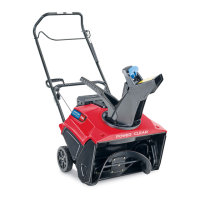
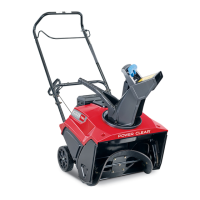

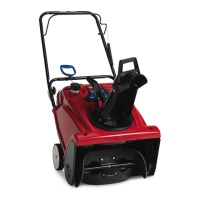
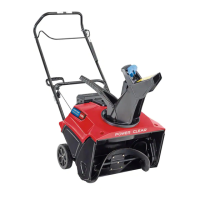
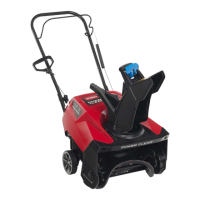



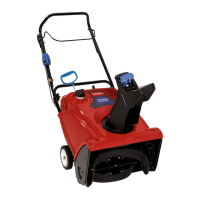
